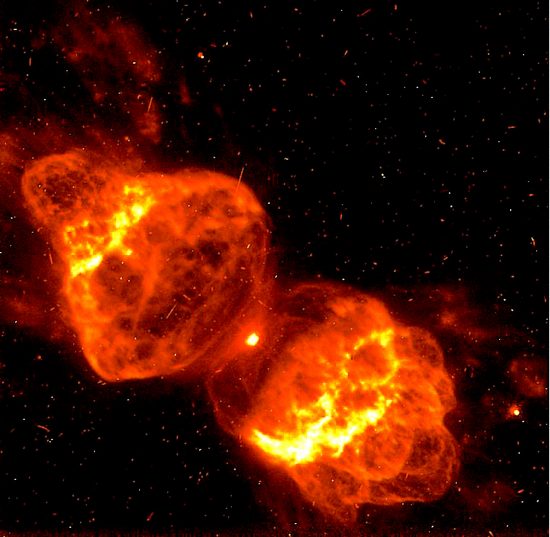
June 25, 2020
The Herschel space observatory operated between 2009 and 2013.
The Herschel Space Observatory was launched on May 14, 2009 into an orbit around LaGrange point L2 (behind Earth in relation to the Sun). Herschel’s supercooled infrared detectors were built to last only three years, so its cooling system has long since failed.
Inside dusty environments, the only way to see is to use infrared light. Molecular clouds glow in various frequencies of infrared radiation, and, according to Electric Universe theory, they are visible because of their electromagnetic activity. Galactic evolution occurs as large-scale plasma discharges form coherent filaments that are influenced by said electromagnetism. Gravity contributes to galactic phenomena, but the behavior of star clusters and galaxies is not dependent on that energy source.
According to a May 2018 press release infrared observations revealed the death of a core star in the Ant Nebula. The new data suggests that the Ant Nebula shoots intense laser emissions from its core.
“Light amplification by stimulated emission of radiation” (LASER) is defined as: ‘A device that produces a nearly parallel, nearly monochromatic, and coherent beam of light by exciting atoms to a higher energy level and causing them to radiate their energy in phase.'”
Isabel Aleman, lead author of a paper describing the new results:
“…we detected a very rare type of emission called hydrogen recombination line laser emission, which provided a way to reveal the nebula’s structure and physical conditions…this kind of laser emission needs very dense gas close to the star…the density of the laser-emitting gas is around ten thousand times higher than that of the gas seen in typical planetary nebulae and in the lobes of the Ant Nebula itself.”
In Electric Universe parlance, rather than a laser, what is observed is probably a form of plasma gun effect. The dense plasma focus device, or “plasma gun”, is precisely the mechanism that can influence cosmic electric currents, thereby acting on the evolution and morphology of space structures.
Birkeland current filaments are the “transmission lines” through which electricity is conducted in the Universe. As previous Pictures of the Day point out, helical strands from nebular cores are an indication that electricity is discharging from them, one of the signature phenomena in a dense plasma focus. The strands are helical magnetic fields that confine electrified plasma and act like power lines in space. That phenomenon is easily seen in cosmic formations. It may be that filamentary strands in the penumbral clouds of stars and nebulae are energized by plasma guns.
Stephen Smith
The Thunderbolts Picture of the Day is generously supported by the Mainwaring Archive Foundation.












